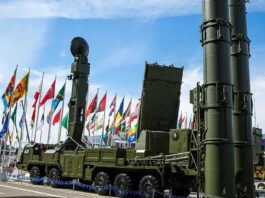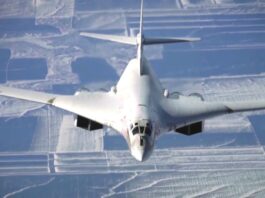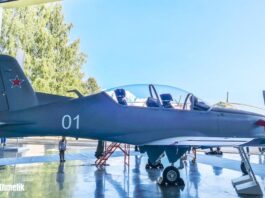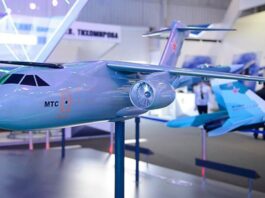The MBDA group, which manages an ecosystem of 1,600 subcontractors in Europe, believes that, by its very existence, it is an asset for European countries, which have sovereign access to a full range of missile systems.
The existence of MBDA is an asset for France, Germany, the United Kingdom, Italy, and Spain in an environment where the use of state violence is becoming more common, according to Eric Béranger, CEO of MBDA, particularly at a time when the conflict in Ukraine is forcing policymakers to consider what kind of capabilities may be required in the future. He believes new armaments such as hypersonic missiles, prowl munitions, and drones necessitate improved air defence.
On the sidelines of the presentation of the 2022 results on March 15, Eric Béranger asked to unite European forces further. According to him, the shock created by the Ukraine war, which has resulted in increased defence budgets in the continent, must also encourage European states to cooperate even more.
To support Ukraine and prepare for every possibility, including a high-intensity battle, the defence sector must organise itself to develop and produce more and faster. In an environment of inflation and supply chain difficulties, technology, mass, and speed are required, according to MBDA’s CEO.
This necessitates the mobilisation of significant national budgets. Nevertheless, as Eric Béranger argues, the European nations, as middle powers, cannot fund such an endeavour nationally. He described MBDA as a significant tool for sovereignty and European collaboration.
The first European missile was built in 2001 through a “cooperative” enterprise. It was formed by the merging of Matra Bae Dynamics, Aerospatiale Matra Missiles (also formed by a merger), and Alenia Marconi Systems. MBDA, which is jointly owned by Airbus (37.5%), BAE Systems (37.5%), and Leonardo (25%), provides all European nations with access to a full range of complex weapon systems, from the land battlefield to the naval, including air combat, ground-to-air defence, and even deterrence (Editor’s note: French nuclear ASMPA missiles).
He maintains that without cooperation, Europe would not have such high-end weapons. Europeans would have to make decisions by purchasing certain capacities off the shelf from foreign powers (Editor’s note: he possibly meant the US), and they would be subject to limits imposed by supplier countries about their usage, he adds.
Because of European cooperation, France and Italy agreed in early February on a joint delivery of a medium-range surface-to-air defence system SAMP/T, also known as Mamba, to assist Kyiv in combating Russian drones, missile, and plane strikes. Mamba employs Aster missiles, which are also employed by Royal Navy warships. This medium-range anti-aircraft missile was developed in collaboration with MBDA and Thales as part of Eurosam, a Franco-Italian GIE (economic interest grouping). He said the company had been awarded a contract to produce approximately 700 Aster by the end of December 2022.
The agreement found in the 155 mm shells (designed to be fired by artillery systems such as the French Caesar cannon) by the 27 European Union defence ministers to mobilise 2 billion euros for Ukraine was another signal of collaboration praised by MBDA. Perhaps one billion to encourage countries with remaining shell stockpiles to deliver them to Kyiv as soon as possible and another billion to place group purchases with European manufacturers.
The MBDA is particularly pleased with the diplomatic warming between Paris and London due to the recent Franco-British conference. France and the United Kingdom have decided to look for common ground, particularly in developing future anti-ship cruise missiles: the British FCASW and the French FMAN/FMC, as well as the missiles of their future combat aircraft. This is part of the Franco-German Air Combat System of the Future (Scaf), with which Spain is involved, and the Global Combat Air Program (GCAP), which includes the United Kingdom, Italy, Sweden, and Japan. According to Eric Béranger, the goal is to build the same missile systems for the two combat aircraft, such as the Meteor, which equips the French Rafale and Eurofighter.
Collaboration, on the other hand, implies that countries play the game by ordering the armaments they finance, which is not the case. By the end of October, Germany gathered more than 15 NATO member countries around its “European Sky Shield” proposal, which aims to build an anti-missile shield using German IRIS-T SLM systems (made by Diehl Defence), Israeli Arrow- 3 missiles, and American Patriot missiles. The goal of Berlin is to pool purchases of anti-aircraft defence equipment. This plan was met with disapproval in France and Italy.
It should also be emphasised that Berlin had to wait months for the United States’ approval to purchase the Arrow 3 anti-ballistic missile system, partially funded by Washington, for $3 billion.
MBDA is working on hypersonic technologies. According to Eric Béranger, the company is working on hypersonic weapons and capacities to defend against them. But several European countries limit cooperation by preferring to establish themselves under the American umbrella and buy from American manufacturers rather than European ones.
MBDA had a strong fiscal year in 2022 due to international orders. Export accounted for half of its total revenue of €4.2 billion. According to the CEO, the crisis in Ukraine had no direct impact on MBDA operations or its order intake, which was exceptional at €9 billion, led by contracts with the United Arab Emirates, Greece, and even Poland. By the end of 2022, the order book had hit a new high of €22.3 billion, equivalent to approximately 5.5 years of output. MBDA wants to hire 2,000 workers in Europe to fulfil these contracts and prepare for additional orders in France, particularly under the new Military Programming Law, which will spend €413 billion between 2024-2030.






